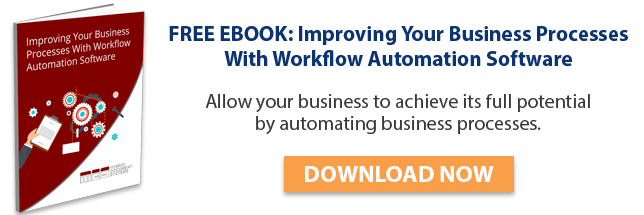 You may have been asking for an automated document management solution for a really long time, or perhaps, you’re just starting the conversation. Either way, if you’re having these conversations with executives you’ll need to be prepared to present a solid business case for the transition. Any major change has the perception of complexity, high costs and disruption for the sake of disruption. While the benefits may be clear to you and your team, often you’ll face some opposition from leadership if you don’t communicate the need properly.
You may have been asking for an automated document management solution for a really long time, or perhaps, you’re just starting the conversation. Either way, if you’re having these conversations with executives you’ll need to be prepared to present a solid business case for the transition. Any major change has the perception of complexity, high costs and disruption for the sake of disruption. While the benefits may be clear to you and your team, often you’ll face some opposition from leadership if you don’t communicate the need properly.
Here are three ways to express a business case for adopting document management automation software.
Show the impact of manual process gaps
Dig into the numbers, and look for gaps or inefficiencies that affect the bottom line. Here’s a great statistic: Consulting company Accenture says that organizations waste significant amounts of time manually trying to track down information, and sometimes with serious bottom-line consequences. Their study showed that 59% of middle managers say they miss important information on a daily basis because they can’t find it. Accenture also found that Global 3000 companies spend between 3% and 5% of their revenue managing and delivering corporate content. Find those numbers for yourself (within your own organization) and make a case for how much investment in “manual processes” is costing the company on an annual basis.
Talk about ROI: hard and soft
It’s easier to present hard ROI numbers, so start there, but be sure to include soft ROI metrics as well. Executives will want to know overall impacts. You can include statistics like, changing to a digital filing cabinet would reduce office space allocated to filing storage by 60%, according to AIIM (the Association for Information and Image Management). AIIM also estimates that organizations could cut their server size by as much as half if each document or email attachment was stored just once. An organized, centralized document management system would allow for easy (and one time) data capture. Think about potential ROI in areas like, data storage, paper costs, streamlined business processes due to faster access to information, and workforce reduction.
Include soft ROI include impacts related to better decision making, competitive advantages, and employee productivity.
Present a plan for change management
You’re presenting a major process change, and the introduction of brand new technology, so make sure you put together a plan for how to adopt these changes in your workplace. Get input and participation across all of the departments impacted by document management automation. This will show that you’re covering your bases, and that you have buy-in from more than one department. You should try to get the support of at least one executive “champion” to help you develop the kind of business case that will resonate with the greater executive team.
The benefits of using an automated document management system aren’t hard to find, but they need to be communicated properly in order to get executive buy-in. Be prepared to talk about the bottom-line, and greater ROI across departments.

